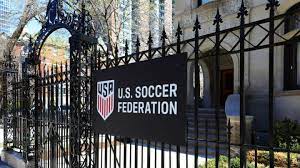November 29 – Last month as reported by Inside World Football (https://tinyurl.com/zynnae8x) the US Soccer Federation (USSF) announced that they would be reviewing how the soccer ecosystem chooses to register players.
In 2017 the Federation moved to the birth year criteria as opposed to the school year, which is in line with the rest of the world, however, different stakeholders, with different agendas wanted to reverse that decision.
U.S. Soccer’s Board of Directors and staff reviewed these insights and have recommended the following next steps aimed at empowering organisers of soccer and benefitting players of all levels.
The Federation received more than 15,000 responses from members, leagues, clubs, coaches, families, and participants and summarised that starting in the fall of 2026, members and leagues will have reasonable flexibility to choose the best registration option for their participants meaning they can choose between birth year or school year for the 2026-2027 season.
They’ll be no change for the 2025-26 season giving clubs and leagues the time to transition to the system that best suits their membership and ecosystem, thereby providing the best experience for all participants.
The Federation also committed itself to building resources and tools to support the membership including webinars, training and feedback forums. They will also host a website that will look at best practices and track the decisions made by member organisations.
At first glance, this announcement feels like classic buck passing from the Federation. At second glance it re-enforces the USSF’s total disregard for taking leadership in the youth game. Instead of being a voice of reason for the millions of youth players, it has thrown a problem back to the capitalistic club owners that run the youth game.
Instead of having a uniform decision, organizations and leagues will now use different age criteria as a marketing tool, once again throwing the game into abject confusion.
The alphabet soup of leagues that many complain about, will only multiply, and the losers will be parents, players, and ultimately the developmental pathway for talented American players.
It appears that the USSF understands that considerably less than 1% of players will end up as professional, and yet they’re terrified that the other 99% will leave the game because they will never end up as professionals. By allowing states to pick their own poison, they have missed the opportunity to create a coherent structure, ceding their leadership to ‘mom and pop’ organizations to dictate American soccer – surely a recipe for continued disaster.
Contact the writer of this story, Nick Webster, at moc.l1744973997labto1744973997ofdlr1744973997owedi1744973997sni@o1744973997fni1744973997

